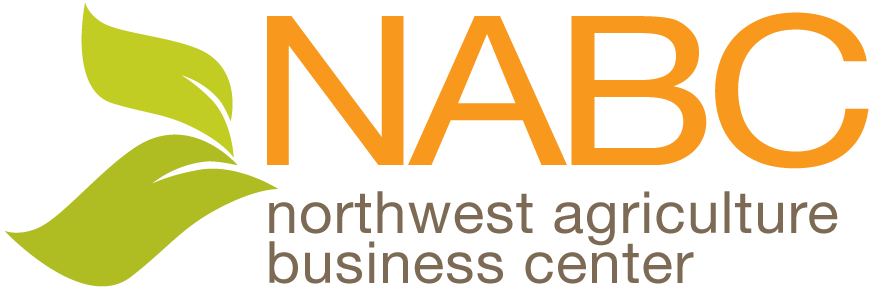Member Highlight: Rosy Smit, 21 Acres Farm
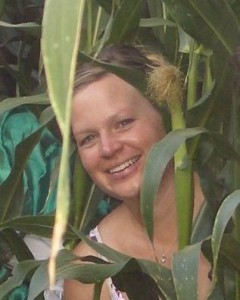 Rosy Smit is the manager of 21 Acres Farm a (you guessed it!) 21-acre diversified vegetable farm and education center in Woodinville, WA and has been a PSFN member for nearly two years. An exciting new retail co-op facility is in the last stages of construction on the property, and will be up and running soon! PSFN’s Lucy Norris and Emma Brewster sat down with Rosy a couple weeks back to find out more about Rosy and all the exciting things happening at 21 Acres this season.
Rosy Smit is the manager of 21 Acres Farm a (you guessed it!) 21-acre diversified vegetable farm and education center in Woodinville, WA and has been a PSFN member for nearly two years. An exciting new retail co-op facility is in the last stages of construction on the property, and will be up and running soon! PSFN’s Lucy Norris and Emma Brewster sat down with Rosy a couple weeks back to find out more about Rosy and all the exciting things happening at 21 Acres this season.
E: So Rosy, how did you end up here at 21 Acres? I know you have a background in soil science at UBC, but don’t know much more about you.
R: My mom and dad had a dairy farm for forty years about an hour Northeast of Kelowna in the Okanogan Valley of BC, just small scale, usually about forty milkers, so our herd was never over 100. Now my brother milks twenty-five cows. The land is organic – the herd isn’t, but it’s treated organically. It’s great because we have 120 acres so the cows are still on pasture when I was home. He tries to run it as sustainably as possible: the cows can go get their own feed; he produces all their feed except for grain ration, then he sells all the excess and makes income that way. So It’s great, I love it.
E: Just last week you were up at your brother’s farm helping out with the cows, right?
R: Yeah so when he needs a vacation, I go home and milk. My brother has a relief milker, but if he wants to go away for more than a couple of milkings, he worries, so I go up there and help him out. So my time off is looking after them.
E: Is it a good change of pace to go up there? Cause it’s a total shift from what you do here.
R: It is. You know, summer is so busy as a vegetable grower – it’s just insane. I still have to get up at 5:30 when I’m there, but getting the cows when it’s still dark is something. I’m flashing my little flashlight, and I see these little beady eyes…. It just freaked me out! We had a sick calf, and two cows probably calved the day I left, but that’s how it is. But it’s good, Mom makes me dinner every night! I’ve definitely got some milk in my veins. Just enough.
E: So you were the first farm to come on board for the Farm to Table (F2T) project…
––– R: Yes! The leeks!
––– E: …those famous leeks…!
E: You were so eager to come on board with the F2T project, Why did you see yourself as a good fit for the project?
R: I don’t want to grow just for the people who can afford certified organic vegetables, or for just the elite part of the market, because there’s a lot of communities, a lot of food deserts, and there’s a lot of people in our communities that don’t have access to healthy or sustainably produced food. So I thought the farm to table project was a perfect opportunity to get our products into a place I wouldn’t normally access, and so those programs and people could get our produce which they wouldn’t have access to otherwise.
E: I was just crunching the numbers last week and we have had eight farms participate. Full Circle sold so much, and Carpinito Brothers sold so much, and you guys were keeping right up with them, even though you are so much smaller! Not dollar for dollar, necessarily, but in terms of orders placed and delivered. It’s impressive because You have such a different model from Full Circle or Carpinito.
R: Yeah, we do, but it worked really well! It’s all about getting to know the people who you’re selling to. Brandy at High Point, we get along so great! She ended up bringing her students out which was amazing! It was pouring rain that morning– just coming down in buckets! And I phoned her that morning and I said, “Brandy, are you guys still planning to come out?” And she said, “Why?!?! Can’t we come out?” And I said, “No, no, no! You can come out!” and the kids had such a blast!
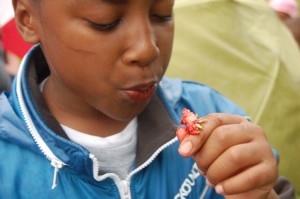 I showed them all the different aspects of our farm, and we walked through the tomato hoop house and they could see, like, eight types of tomatoes growing. And we went to the strawberry patch and everybody ate two strawberries (cause I think they had ordered strawberries once) and I said, “This is where those strawberries came from! Everybody have a taste…” and then I asked, “How many had a tart one? how many had a sweet one?” So I was trying to get the kids to experience fresh off the plant strawberries, and learn that a strawberry’s not just a strawberry. And one little boy had a real sweet one and a real tart one – so, there ya go! Education, right? So they ate peas, and I just showed them the range of what’s growing in the field.
I showed them all the different aspects of our farm, and we walked through the tomato hoop house and they could see, like, eight types of tomatoes growing. And we went to the strawberry patch and everybody ate two strawberries (cause I think they had ordered strawberries once) and I said, “This is where those strawberries came from! Everybody have a taste…” and then I asked, “How many had a tart one? how many had a sweet one?” So I was trying to get the kids to experience fresh off the plant strawberries, and learn that a strawberry’s not just a strawberry. And one little boy had a real sweet one and a real tart one – so, there ya go! Education, right? So they ate peas, and I just showed them the range of what’s growing in the field.
And to see what the kids ate for lunch… this one little boy had Cheetos in a Ziplock and Coke! And I said, “alright, kid, you come with me to the pea patch!” And that’s what I did!
E: So aside from sales, just having, what, 30 kids come out and see that a pea grows in a pod, then maybe that’s enough!
R: Yeah, and you know when the kids come out, I have this little cheat sheet and I say, “How many farms are in Washington state? What are the top three things that are grown in WA state?” or whatever, and these kids are so citified and disconnected from their food system. If you ask, “what’s the last great meal you’ve had,” most people say Christmas or Thanksgiving, or a big Family gathering where you eat a bunch of different things on the table. That just kind of gets them thinking.
And we found a bunch of cool bugs that day, like a caterpillar with a big horn (and I think they ended up squashing it) but they had so much fun! And they could just RUN! I said, anywhere in this big open space, just run in a big circle for ten minutes and get some energy out! And they loved the goats…. so even if it’s just a one time thing, they’ll go home and say to their Mom or Dad, or Gram or whoever, and tell them.. and it’s a whole chain; a domino effect. And I love that.
And I made a couple deliveries to West Seattle; Cheryl with SWEL, and she just commented on how beautiful the produce was. And, you know, we harvest the day of delivery to make sure they get the best quality as well. They’re getting the best of what we have. We want to make sure that they can use all of it. So this week I just sent them some cherry tomatoes for a little taster and some spinach. That might be something she wouldn’t have ordered, that maybe she’d be interested in.
I just see the whole program as a really great fit. And you know, it works for us because we don’t have the production of Full Circle, but we have enough that we can take on customers like her, or whoever.
E: It’s just great for us to see such diverse farms having success with the same program. I mean, you’re pretty much a one woman show, with a little bit of help, but compared to the other farms participating, you’re totally different. But, it’s still a successful model, so it’s interesting to see how that shapes up.
R: And it’s good to show other small farmers so that they can see the benefits and be interested as well so you can get more people on in the future.
E: So what is coming up next for you guys? What’s on the horizon for the farm going into the season change?
R: Yeah, so we’re starting to slow down now a bit, but we’ll have the usual onions and winter squash, root crops, Jerusalem artichokes and stuff like that over the winter. Diversity goes way down but still there’s some local product there. And I do a transition from hardcore summer farming to student education. I have six students coming on who are doing individual projects from UW Bothell ranging from coming up with informational pamphlets to take to market to give out to people; one’s going to do a heritage chicken business plan for me; we have a group of students who come and do test the soils and the water, and they just send me that data! …So all kinds of different projects depending on their interests. And some will just be coming out here and getting dirty, so I transition from growing to a more educational side of things and focus on all the planning for next year and strategizing for the educational program. This summer I had so many schools interested in bringing out kids and doing tours, so I’m going to try and get a student from UW Bothell to come up with a field trip program file so that they can help lead a tour with the kids, and all the learning that goes along with that. So they get actual class credit for doing that, and we get the benefit of having more kids out here.
E: Something I’ve heard throughout is all the educational things you’re involved with. you have students from UW Bothell, kids coming out, educational programs for consumers… if you could design what this space could be used for, would it be primarily education focused? Or primarily a super productive small space? Or a combination?
R: Definitely a combination. We’re not striving to be a production farm. In any way. So everyone has the goal of having really high quality produce, but not trying to eek as much as we can out of our production plots. And another goal of growing lots of different things because that’s educational for people too. The education component is super important, it’s just that the school systems are on a completely different schedule! In a way it’s good, because we can work on our production plot and get super crazy in the summer, but then there’s a bit of overlap so students can come to the farm and see how we winterize, and what we do with our winter cropping system, help harvest things, etcetera, etcetera. In the spring I had six students: five from UW Bothell, and one from Cascadia, who would come to the farm 4 – 6 hours a week and do…whatever! So we planted all our potatoes in like, three hours! which would have taken Pepe and I a long time – days! And I would give them a little fifteen minute lecture in the beginning and tell them why we’re doing it to give them a bit of theory so they’re not just here as labor – they’re actually learning why are we planting here, why are we planting like this… so they did a little bit of everything. And the spring students always get to see the progression. They planted the potatoes and got to taste them because they came back in the summer. One of the students had never eaten a radish before, so I offered her a radish! And that’s an educational experience in and of itself. She didn’t like it, but, whatever!
My Cascadia intern moved to Cle Elum and started his own garden and put up a little hoop house at his place and even though the climatic conditions are really different (it’s really hot and dry there) he still had the knowledge base to use those production helps. So that’s cool to see. So I can see it being more education in early spring, fall, and winter quarters, but in summer – unless we have more help – we’re too busy. We still have to be making some money and producing some food.
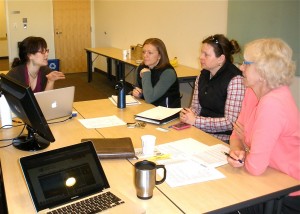
R: It’s been great. All the components. Our page on the site, working with you two and Karen: completely positive and beneficial. We feel like you’ve really taken us under your wing to help us out!
––– L: But the thing is, why not? This place is so cool!
R: And the farm is so close to Seattle! We’re even a little closer than Snohomish and Carnation, and because we have this big educational component we’re more than happy to have people come out here and learn about green building design and sustainable ag. That’s what we’re all about! So I see it as just such a great fit for us.
L: And that’s such a great compliment for us, too, because, though we could do the educational stuff, our mission is to help move the product and get it out there, and feed more people than just the niche markets like you were talking about. You know, we’re all eaters!
R: Yeah! And there’s so much food being produced that’s so close, you know. But you know, I haven’t been here for that long, and I‘m still trying to figure out how things are going to look and what we’re going to grow, and what our market’s going to be… so I’m really thankful. It’s not like we sold 5 orders a week for Farm to Table, but if I can create relationships with those purchasers, then maybe it will be an ongoing thing, or maybe they’ll be interested in trying a different things. It’s all about trust, right? I’m trying to find chefs to work with locally, here, and other venues to get my product out into.
L: So just off the top of your head, what are the things that you grow well, and what are the things you don’t like to mess with?
R: I do not grow celery. It takes a long time, and if the weather is inclement, then forget it! it was the same up at the UBC farm. I have problems with cold crops here. Though we do cabbage and broccoli and everything else. I try to grow a little bit of everything. I grow really good beets, I grow really good tomatoes, basil… but this year I just grew some of my old faithfuls, like Oregon Sugar Pod II, those are failsafe and taste great. And I’m trying to grow things in different seasons, too.
I’ve only been here a season and a half, and had horrendous weather this spring and it was a tough summer – it was so wet for so long. We had sixteen days of sunny weather in five months, so such a late start, but when it got hot in August, BOOM! We got hit so hard. But I’ve just been growing crazy varieties of everything just to see what does well. And some things, you know, why am I growing jalapeños? I have a hundred feet of them and nobody buys them!
––– L: I’ll buy em! …I just can’t buy all of them!
R: Yeah, doesn’t anybody make jalapeño jelly around here?
L: I pickle them every year! But I can only do one case at a time.
R: Really?
L: Yeah, I just did a demo down at Pike Place Market for Canning Across America. They had 300 people look at that recipe in the last 2 months!
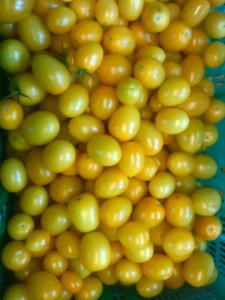 R: and it changes, you know, Farmers Markets are really fickle. We grow these golden rave tomatoes… [gesturing]
R: and it changes, you know, Farmers Markets are really fickle. We grow these golden rave tomatoes… [gesturing]
––– L: those are so pretty!
R: Yeah they’re so delicious; they have twice the moisture content of a regular plum or roma, and if people try them, they love them! But people don’t want yellow tomatoes! they want heirlooms… it’s a lot of education.
L: So what products got you the most excited this year?
R: Everyone commented on our broccoli, on how sweet it was. I grow Packman and another variety that matures at different times which is great for a small farm like this. Tomatoes were fantastic. I grew Brandywines and Speckled Romans and all kinds of varieties . Cippiolini onions, and stuff like that. Stuff that tastes good!
L: Do you do fruit?
R: No. We had a strawberry patch which everyone raves about, but couldn’t sell the berries because they were so small. And you know the guys in Mount Vernon have these great big berries, so, we’re gonna plant a new block this year. And of course my friendly resident herd of deer would go under the fence and snack on the buffet. I’m having a student do a business plan on gooseberries and currants, but this new fruit fly that’s here – have you heard of this? – goes to immature fruit. Usually they go to fermented fruit, (like if you have cherries that are hanging too long) but this one goes to young fruit and lays eggs there. We have tons of bitter cherries and blackberries that are just incubation sites for that pest. It’ll go to apples, to strawberries, so I’m just holding off until there’s a reasonable organic management method, because what’s the point of putting in a block of small fruit and then having it devastated by these fruit flies? And there is no organic control right now. So I’m holding off. But fruit is the next thing. When my nephew was young, he told me that he wanted to be a fruit farmer. And I asked, “But why, Dustin?”
“Because everyone loves fruit!”
And yeah, if you have a choice between a carrot and a strawberry… duh! And that would really diversify our production and we’d have some perennials, because annuals – they’re tough. Fruit’s in the long term farm plan, but I’m a little leery right now. And there’s a whole permaculture plan completed for this farm with nut tree plantations, with sheep under them and chicken tractors, and the whole bit, but it’s figuring out where the money and efforts are best spent. I found an apple orchard out there in four feet of grass, caught up and talked to the guy who planted it, and we’re trying to rehabilitate it.
L: So right now you’re selling to a few Farm to Table buyers, and you said you’d be interested in working with more restaurants. What’s your ideal customer mix right now?
R: I see one or two farmers markets being really beneficial in getting the word out about our programming because there’s a lot of people that walk through and you can move a lot of product on a good day. Having some regular customers like F2T and getting our food into more institutions like kids programs, senior centers, things like that, and then working with restaurants or catering businesses would be great. I’ve even sold a bunch of cylindrical beets to Heidi for her food delivery to make beet fries! Yum! So I’m still working on all of that. That’s a winter job, too. If I can connect with a restaurant who wants to buy whatever kind of heirloom tomatoes, then it’slike contract growing for them. So I would like a diverse range of where our income would come from. And, too, some of it would come from charging some school groups per head fees, or if there are different classes being run in the back, that all counts too. it’s not just a production farm. That’s for sure.
L: Yeah, I can think of three restaurants right off the top of my head who would love to work with you. Restaurants are always interested in the new thing; they want to play with their food. And they’re also trying to run a kitchen, which is all based on that budget and trying to get that food in and out. You can’t bank your farm completely on restaurants or farmers markets alone – because you know how much work that is! – but if you have your customer base be as diversified as your operation is, then that to me is the key to success.
E: So right now, at this point in the season, where can people buy your produce? Are you still at any markets?
R: We aren’t, but last week we started sending out our fresh list to our regulars, and we have people just come here and pick up orders. And yes, diversity is decreasing, but there’s still produce.
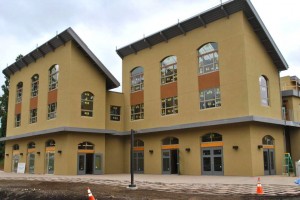
E: It will be cool if you guys can get some of your produce into the retail coop; it’s such a selling point for customers to see that it came right from the store’s backyard.
R: We will, for sure! Yes, it’s literally 800 feet back there. We will just be one of the producers. We’re all about educating the consumer about where the food comes from. You go to these grocery chains that tout being local and sustainable, but you never know where the produce is actually coming from and who the farmer is. So part of the educational part of our co-op would be, “Here’s who’s growing this, if you want to go talk to them, or go to their farm…” then we can create a real connection there.
To learn more about 21 Acres and the new retail co-op facility, check out their website, and stay in touch through their Facebook Page.
